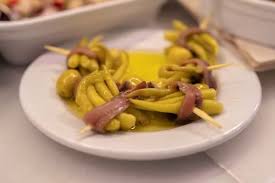If you’re searching for a fresh, flavorful ingredient to brighten your meals, look no further than prosecchini. Known for its mild taste, tender texture, and incredible versatility, prosecchini has become a favorite among chefs and home cooks alike. Whether roasted, grilled, baked, or blended into desserts, this humble vegetable can transform ordinary dishes into culinary masterpieces.
In this article, we’ll uncover everything you need to know about prosecchini—its nutritional value, cooking techniques, creative recipes, and expert tips that make it a must-have in your kitchen. Ready to level up your cooking game? Let’s dive into the delicious world of prosecchini.
Understanding Prosecchini: A Culinary Gem
At first glance, prosecchini resembles the familiar zucchini or summer squash, but it has its own distinct charm. With a slightly nuttier flavor and smooth consistency, prosecchini pairs well with countless ingredients, from fresh herbs to rich sauces.
Beyond its taste, prosecchini is celebrated for its nutritional profile. It’s low in calories, high in fiber, and rich in antioxidants—making it perfect for those seeking a wholesome yet tasty addition to their diet. Whether you’re vegan, vegetarian, or simply health-conscious, prosecchini fits effortlessly into any meal plan.
Health Benefits of Eating Prosecchini
Cooking with prosecchini isn’t just about flavor—it’s about fueling your body with goodness. Here’s why this vegetable deserves a permanent place on your plate:
- Rich in vitamins and minerals: Prosecchini provides vitamins A and C, essential for immune support and skin health.
- Heart-healthy: High potassium levels help regulate blood pressure, promoting cardiovascular wellness.
- Supports digestion: Its fiber content aids digestion and helps maintain a healthy gut.
- Weight-friendly: With its low-calorie, high-water makeup, prosecchini makes you feel full without adding unnecessary calories.
- Packed with antioxidants: These compounds fight oxidative stress, reducing inflammation and supporting long-term health.
In short, prosecchini delivers the perfect combination of nutrition and flavor—ideal for guilt-free indulgence.
Appetizer Ideas with Prosecchini
Prosecchini shines in starters and side dishes where its natural sweetness and crisp texture take center stage. Try these simple yet impressive recipes:
Grilled Prosecchini Rounds
Slice prosecchini into thin rounds, drizzle with olive oil, and season with salt, pepper, and a dash of garlic powder. Grill for a few minutes on each side until golden and tender. Serve with a squeeze of lemon and a sprinkle of parmesan for a quick, elegant appetizer.
Prosecchini Fritters
Mix grated prosecchini with eggs, breadcrumbs, and herbs, then pan-fry until crispy. These golden fritters pair perfectly with a creamy yogurt dip or spicy aioli.
Marinated Prosecchini Salad
For a refreshing twist, combine thinly sliced prosecchini with cherry tomatoes, basil, and mozzarella. Toss with balsamic vinegar and olive oil for a light, Mediterranean-inspired starter.
Main Course Recipes Featuring Prosecchini
Prosecchini’s adaptability makes it the star of many main dishes. Whether you prefer pasta, stir-fries, or casseroles, this ingredient seamlessly fits into any cuisine.
Prosecchini Pasta Primavera
Sauté garlic in olive oil, add sliced prosecchini, bell peppers, and cherry tomatoes, then toss with al dente pasta. Finish with freshly grated parmesan and a drizzle of lemon juice. It’s a vibrant, comforting meal that bursts with flavor.
Stuffed Prosecchini Boats
Halve prosecchini lengthwise and scoop out the centers. Fill them with a mix of lean ground turkey, herbs, and tomato sauce. Top with mozzarella and bake until bubbly. This healthy comfort dish will quickly become a family favorite.
Prosecchini Stir-Fry
For a quick and wholesome dinner, stir-fry prosecchini strips with tofu, bell peppers, and snap peas. Add soy sauce, ginger, and sesame oil for an Asian-inspired meal ready in minutes.
Sweet Surprises: Prosecchini in Desserts
You might be surprised to learn that prosecchini works beautifully in sweet recipes. Its mild flavor adds moisture without overpowering the dish—making it perfect for baking.
Prosecchini Muffins
Add grated prosecchini to your favorite muffin batter along with cinnamon and nutmeg. The result? Soft, moist muffins with a hint of natural sweetness and a boost of fiber.
Prosecchini Chocolate Cake
Replace part of your flour with grated prosecchini for a decadent yet healthier chocolate cake. The vegetable’s moisture keeps the crumb tender, while cocoa masks its taste entirely. No one will guess your secret ingredient!
Prosecchini Bread
Much like banana or zucchini bread, prosecchini bread is a moist, aromatic treat ideal for breakfast or an afternoon snack. Top with chopped walnuts or drizzle with honey for extra indulgence.
Expert Tips for Cooking with Prosecchini
Cooking prosecchini is simple once you know how to bring out its best qualities. Follow these expert tips for flawless results every time:
- Choose fresh produce: Look for firm prosecchini with glossy skin and no soft spots. Smaller ones tend to be sweeter and more tender.
- Avoid overcooking: Prosecchini cooks quickly—too long on heat and it becomes mushy. Light sautéing or grilling preserves its texture.
- Season thoughtfully: Its mild flavor pairs beautifully with garlic, basil, thyme, or lemon zest. Avoid heavy sauces that overpower it.
- Drain excess moisture: If using shredded prosecchini for baking or fritters, squeeze out excess water using a kitchen towel to prevent sogginess.
- Experiment boldly: Don’t be afraid to use prosecchini in soups, smoothies, or even homemade noodles. Its versatility knows no bounds.
The Culinary Evolution of Prosecchini
Once a humble garden vegetable, prosecchini has become a staple in modern kitchens worldwide. Chefs appreciate its ability to adapt to different cuisines, from Italian to Asian fusion. Its rising popularity in plant-based cooking also makes it a go-to ingredient for vegetarian and vegan recipes.
Moreover, prosecchini’s affordability and easy availability make it perfect for everyday cooking. Whether you’re hosting a fancy dinner or preparing a quick lunch, this ingredient can elevate your dishes with little effort.
Conclusion: Why You Should Cook More with Prosecchini
Cooking with prosecchini is a journey into creativity, health, and delicious simplicity. This unassuming vegetable proves that wholesome food doesn’t need to be complicated. With just a few ingredients and a bit of imagination, prosecchini can turn an ordinary meal into something truly memorable.
From crispy appetizers to decadent desserts, prosecchini adapts to every culinary need. It’s nutritious, budget-friendly, and endlessly versatile—a true kitchen essential. So next time you’re planning your menu, give this incredible ingredient the spotlight it deserves.
Bring prosecchini into your kitchen, and you’ll discover that the best recipes start with simplicity and a touch of imagination.
FAQs About Prosecchini
1. What is prosecchini?
Prosecchini is a type of summer squash similar to zucchini, known for its mild, nutty flavor and versatility in both savory and sweet dishes.
2. How do you cook prosecchini?
You can grill, roast, sauté, bake, or even enjoy prosecchini raw in salads. Its quick cooking time makes it perfect for fast, flavorful meals.
3. Is prosecchini healthy?
Yes! Prosecchini is rich in vitamins A and C, potassium, and fiber, while being low in calories and fat—making it an excellent choice for a balanced diet.
4. Can prosecchini be used in desserts?
Absolutely. Prosecchini adds moisture and texture to baked goods like cakes, muffins, and breads without altering their flavor.
5. How do you store prosecchini?
Store fresh prosecchini in a cool, dry place or refrigerate it in a paper bag. It stays fresh for up to a week when properly stored.
Final Thought:
The next time you step into your kitchen, let prosecchini inspire your cooking. Whether you’re whipping up a savory stir-fry or baking a sweet treat, this humble ingredient brings freshness, nutrition, and creativity to every dish.


